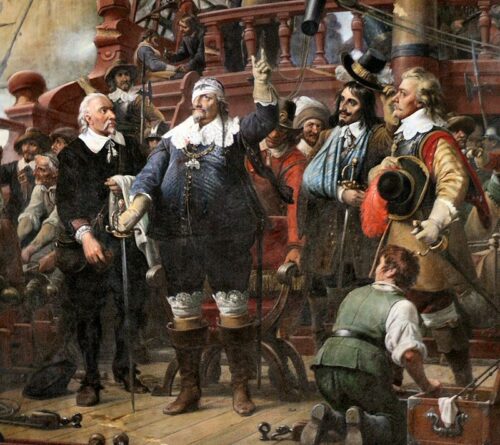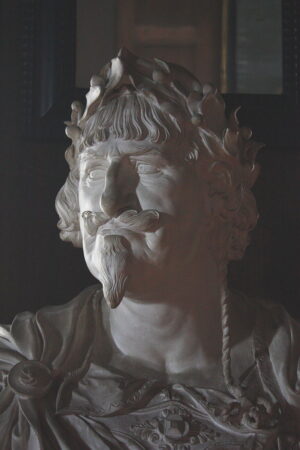Early adulthood
Lutheranism became the state religion with a decree issued by the new king in October 1536. The rebels were given an amnesty, the city kept its privileges and the University was reestablished as a Lutheran institution in 1537. All priests were forced to convert to the state’s new religion or spend their lives in prison with their properties confiscated by the state. The first Lutheran superintendents (later bishops) in Domkirken (Vor Frue Kirke) were installed in 1539.
Catholic Monasteries, abbeys, and churches were closed down and their lands went to the crown, which managed to pay off its debts and increase its wealth considerably by 1550. Despite his flaming entry Christian III in general lines followed the path of a pacifist during his reign. He sought new alliances, pursued peace agreements promoted trade, and thus helped Copenhagen enter a new era of prosperity that would continue with his son and heir Frederick II after his death in 1559.
Both kings avoided foreign complications but both were inevitably entangled in some sort of warfare with the Swedes more like an exception to a rule of a generally peaceful and prosperous period that lasted until Frederick II died in 1588. The two kings were entombed together in Roskilde’s Cathedral.
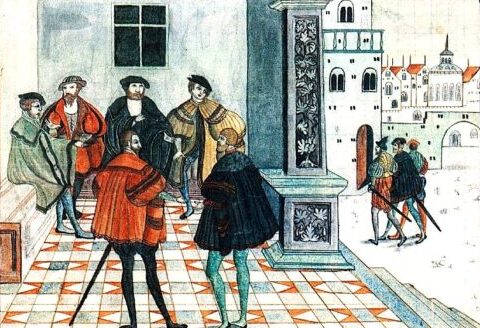

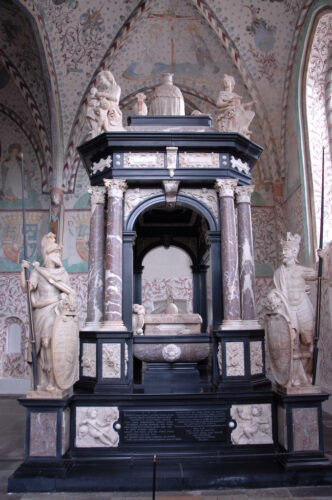
When Frederik II died in 1588 his son and heir to the throne Christian IV was just 11 years old. Internal feuds had been long past, the treasury was full, and the country had become a haven for educated middle-class Dutch fleeing the Eighty Years’ War (1568–1648) in the Netherlands, that were contributing most beneficially to the modernization of Denmark, Copenhagen was growing under the protection of a new set of reinforced walls.
A powerful governing council of four leading political figures was formed in ordetohings in order while Christian went on with his schooling. In June 1594 the Danish Chancellor that served as the head of government (Niels Kaas) handed the 17-year-old Christian IV the keys to the royal vault from his dying bed.
A few months later the council decided the transition and on August 29, 1596, Copenhagen became the stage of the biggest & most optimistic inauguration ceremony in Danish history with hundreds of guests, lavish linen and thousands of specially ordered drinking glasses, elaborately decorated streets, a fountain of wine that ran for hours in Amagertorv square, horse tournaments, fireworks, etc.
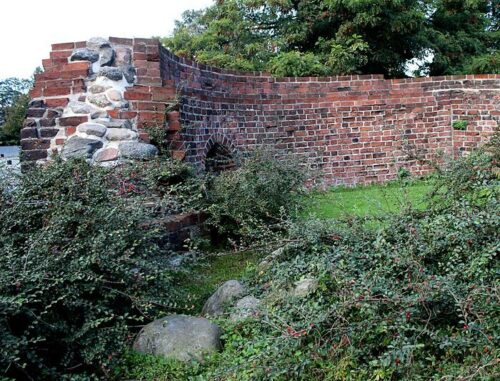

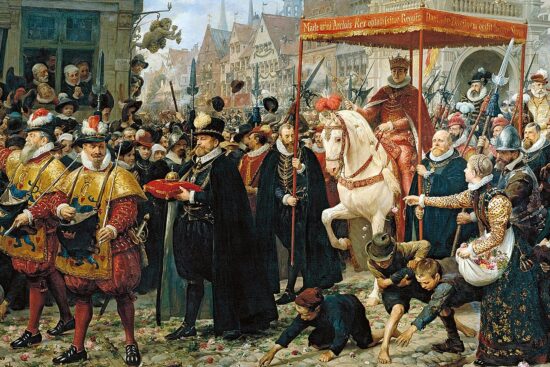
The days of the power of the new king proved to be as bright as his inauguration. His royal twas erm one of the longest in Danish history (1588-1648). Especially for Copenhagen, Christian IV has rightfully earned the title of the most prominent architect in the city’s history. Christian knew that to realize the ambitions he had to rely heavily on his navy.
The dominance over the Baltic sea depended on that. He laid out his plans for a new naval base at Slotsholmen next to Copenhagen Castle right away. The commission for a new harbor and a huge new arsenal had already been given by 1598. Six years later an entire complex consisted of a 163 meters long, 24 meters wide arsenal and walls three meters thick, a protected harbor basin with a canal connecting it to the coast, and several auxiliary buildings were all in place.
Even a brewery and a bakery were added later on, while an artificial islet bearing a tall column with a statue depicting the classical myth of Leda and the Swan on top, was placed just off the entrance of the arsenal. By 1610 the Danish navy would have tripled its fleet compared to 1596.
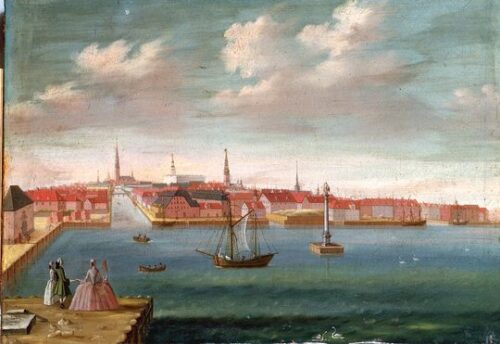
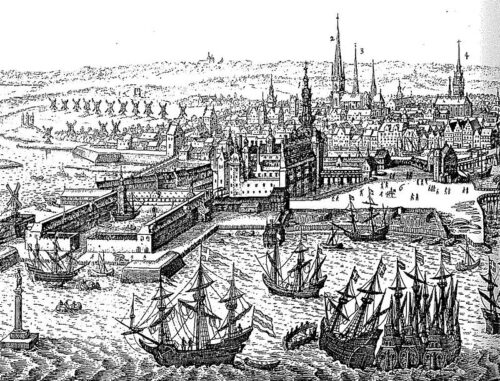
With his fortune following the growing economy of the state (part of the Øresund customs went directly to him) in 1606, the king acquires a massive piece of land outside Copenhagen’s East Rampart and establishes a Renaissance garden that would from then on be known as Kongens Have (The King’s Garden).
At the time the king and his family resided at Frederiksborg Castle, the king’s birthplace, situated 40 km away from Copenhagen due to the poor condition of the outdated city castle. The construction of Rosenborg castle on the new estate started modestly as a sort of summer hermitage but it almost immediately (1610) became the royal favorite. It was continuously extended and beautified by Christian until 1634 when it hosted the lavish wedding of the King’s son Christian and Princess Magdalena Sibylla.
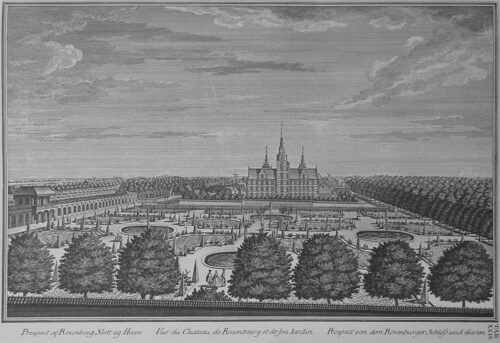
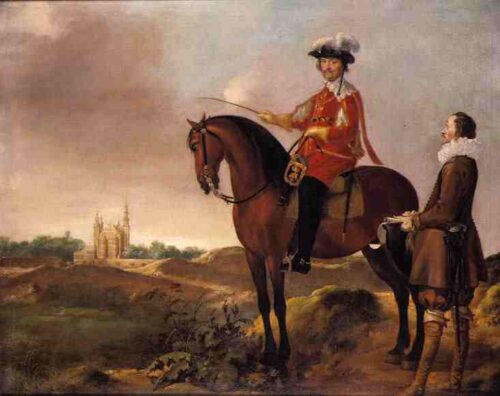
In 1602 Copenhagen is bestowed along with Malmö and Helsingør exclusive trade rights in Iceland and in 1605 the first textile factory is set up with prisoners and orphans being the first workers. In 1606 a major expansion and enforcement of the fortifications that would last 20 years started taking place.
At the same time, an area of 200 hectares of land outside the Eastern City Gate was purchased to be redeveloped into a new district referred to as Ny København (New Copenhagen). It would eventually evolve into Kastellet and would only be completed after King Frederick III succeeded King Christian IV.

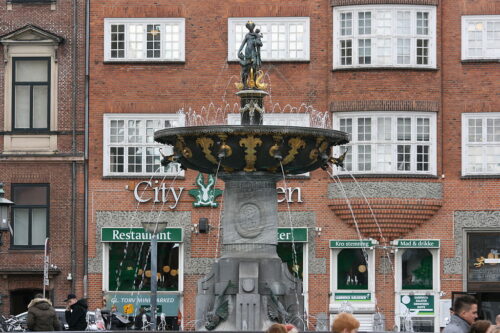
In 1608 the famous Caritas Fountain is set up on Gammeltorv, where the Strøget pedestrian zone lies today. A year later the Cathedral of Our Lady is reconstructed and in 1610 the City Hall is adapted to Renaissance style with the area behind it cleared to make way for a brand new square named Nytorv (New Market).
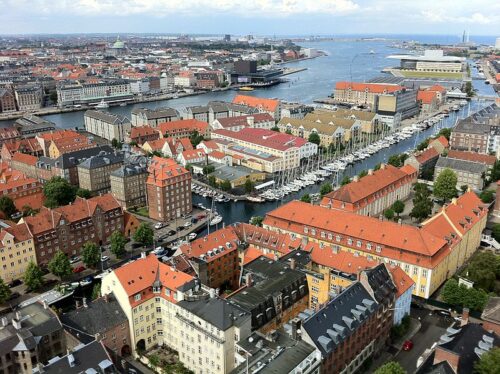
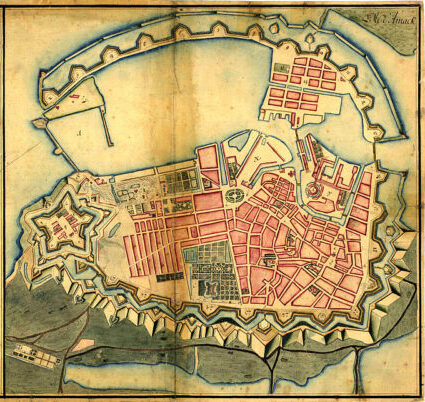
Determined to make Copenhagen the greatest city of the North and inspired by Dutch city planning, Christian proceeds with the construction of a whole new district, on an artificial bank of soil and rubble from the city that was erected across the inner harbor to the shores of Amager.
The new district would use artificial waterways just like Amsterdam and would protect the fleet of the Royal Danish Navy – which was docked at the harbor entrance (Holmen). At the same time, it would produce extra tolls by foreign merchant ships passing through the narrow strait between Sealand and the Isle of Amager.
The new Dutch quarter would be named Christianhavn after the king and would work as an independent market town dedicated to trading. Reclaimed land and laid out streets, squares, and plots for merchant’s houses were all developed during the period 1618-1623.
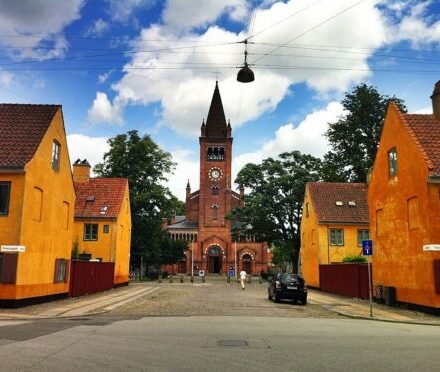
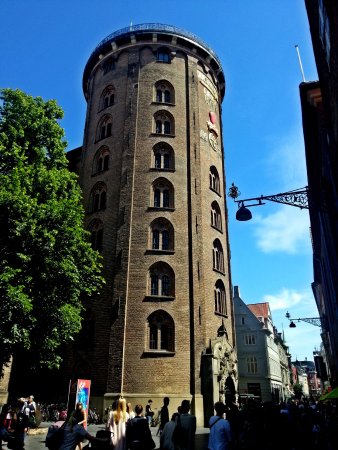

The unmatched palette of King Christian IV’s transformations was completed only after the additions of Nyboder (1631), a new residential neighborhood near Østerport, built to house the growing number of skilled sailors in the royal fleet, of Rundetårn and Trinitatis Complex (1637), the astronomical observatory tower, the church and library of Trinitatis that were to be used by the University of Copenhagen and finally of the amazing Børsen, the Dutch Renaissance style building of the Stock Exchange completed in 1640.
In 1644 Sweden would manage to stain Christian IV’s legacy with a grave defeat in the Torstenson War, which resulted in the annihilation of the Danish fleet and the loss of several territories in the north. He almost killed himself in one of the naval battles. His death in 1648 left the Danes with a bittersweet taste. For the citizens of Copenhagen, he would always be one of their most beloved kings.
